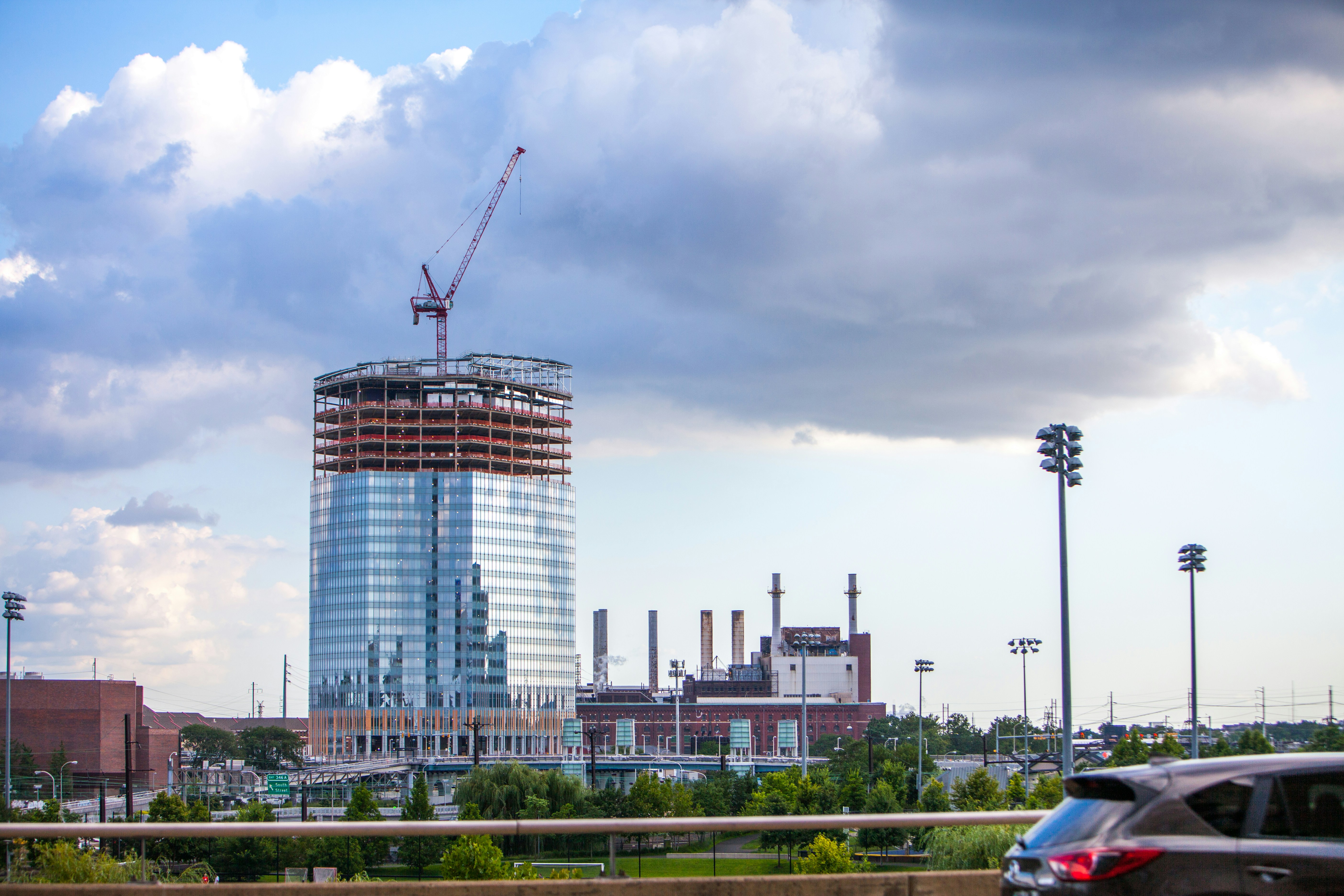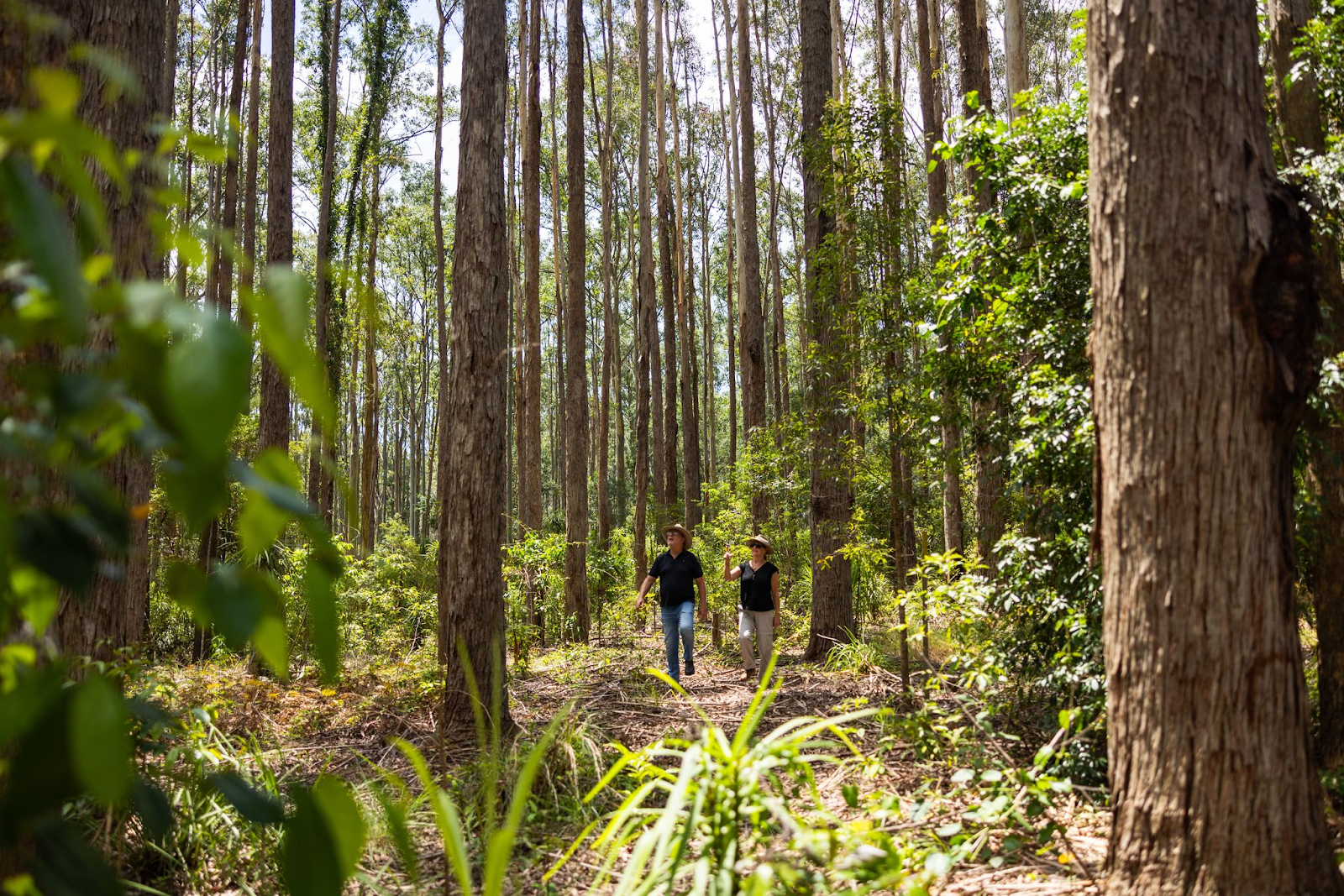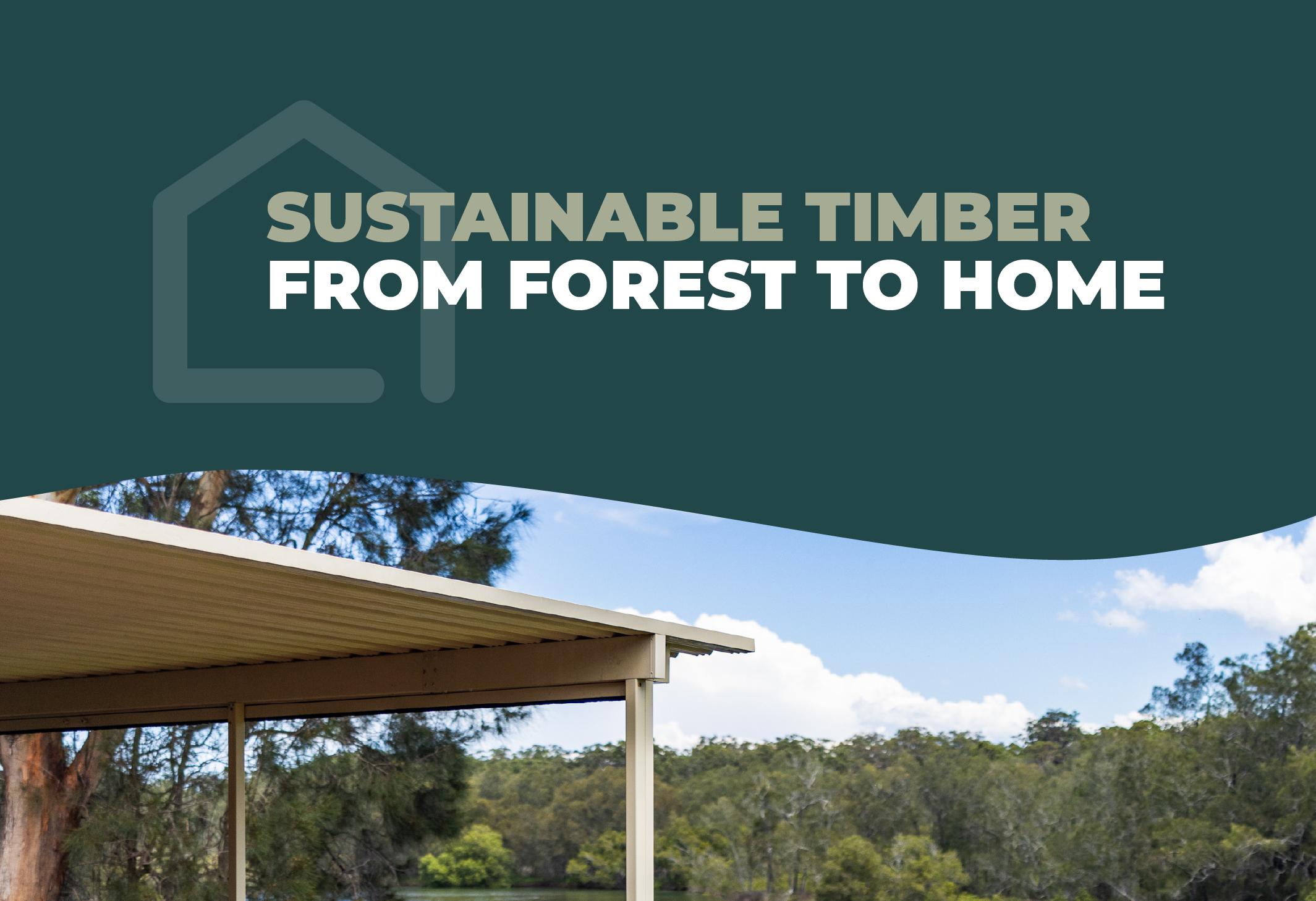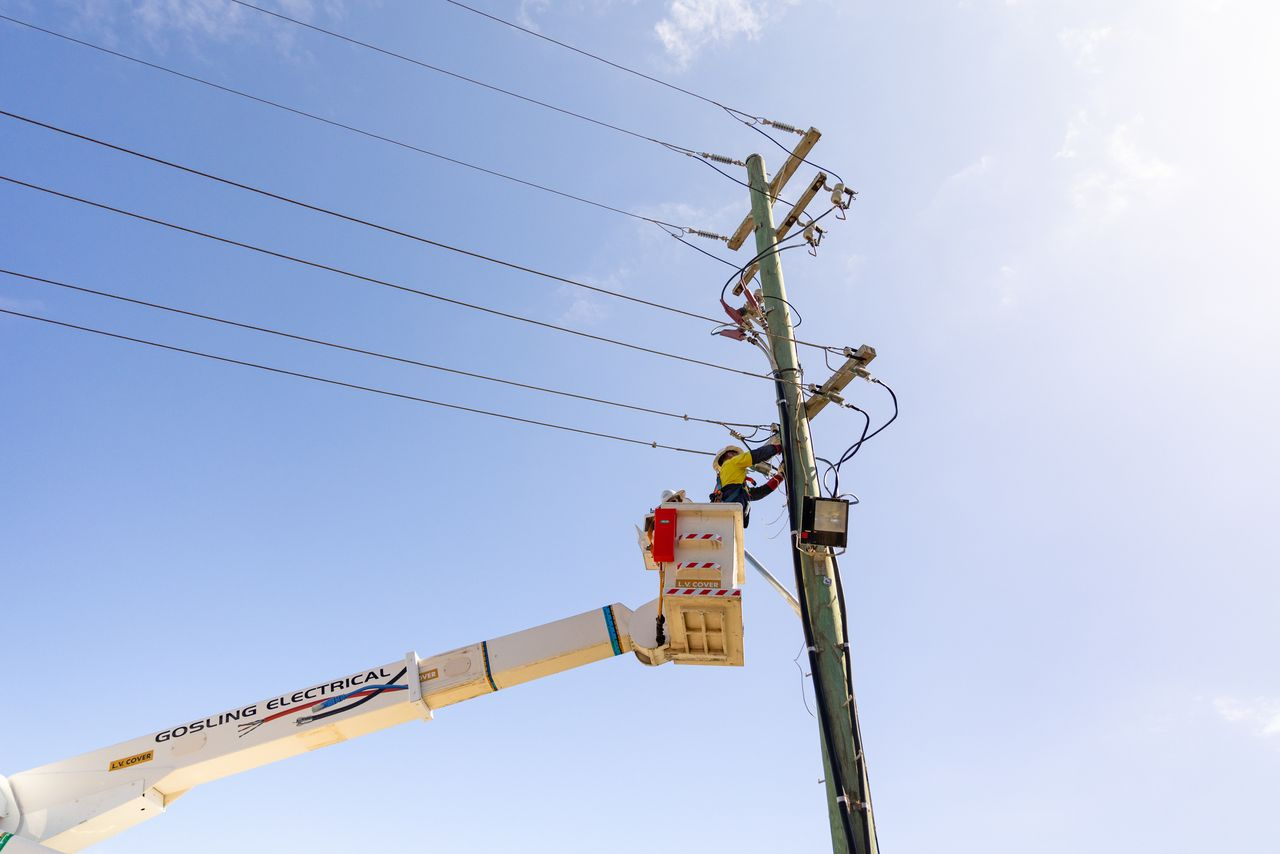Concrete, steel and wood are the three most popular building materials worldwide. With concrete claiming the top spot in global usage, it’s easy to overlook the advantages of timber. But as the push for greener construction practices grows stronger, timber is making a solid case for itself.
In this blog, we explore how timber stacks up against other common materials – concrete and steel in construction, fibreglass in telegraph poles, and composite products like Ekodeck in decking. Is timber still a worthy contender in modern construction, or are the newer alternatives taking over?
Timber vs Steel and Concrete in Building Construction
Concrete and steel dominate the skylines of modern cities, and for good reason. Concrete is strong in compression, fire-resistant, and widely available. Steel offers unmatched strength, precision, and adaptability for high-rise construction. These materials however come at an environmental cost.
Carbon Footprint
Concrete production accounts for roughly 8% of global carbon emissions. Steel isn’t far behind, with its energy-intensive manufacturing process releasing large quantities of CO₂ (World Economic Forum). In contrast, timber is one of the only materials that stores carbon rather than emitting it. Trees absorb CO₂ during growth, and when harvested and used in buildings, that carbon stays locked in the wood.
In Far North Queensland for example, if half of the new homes built over the past two years were timber maximised, over 74,000 tonnes of carbon emissions would have been avoided (Timber Queensland).
Renewability
Concrete and steel are finite resources and require mining and smelting, respectively. Timber, on the other hand, is renewable, especially when sourced from responsibly managed forests. Plus, the production of timber uses far less energy than either steel or concrete, making it a much more energy-efficient material (The Greenlist).
Weight and Build Time
Timber is significantly lighter than concrete and steel, which reduces transportation costs and eases on-site handling. Timber construction can also be faster, particularly with prefabricated elements and modern cross-laminated timber (CLT) systems (Think Wood).
Downsides?
Yes, timber is susceptible to moisture and fire. But modern treatments and engineering advances (like fire-resistant coatings and kiln drying) have largely mitigated these concerns, making timber a strong alternative in both low- and mid-rise buildings.
Verdict: In terms of sustainability, efficiency, comfort, and carbon capture, timber outperforms steel and concrete across the board.
Timber vs Fibreglass Telegraph Poles
Telegraph and utility poles have traditionally been made from hardwood, such as Ironbark and Spotted Gum, valued for their strength and longevity. In recent years, fibreglass-reinforced polymer (FRP) poles have gained attention due to their durability and resistance to rot and pests.
Strength and Performance
High-density hardwood poles, such as Ironbark or Spotted gum, are naturally strong, long-lasting, and resistant to extreme weather. While fibreglass is durable, it can be brittle under impact and more difficult to repair if damaged.
Environmental Impact
Timber poles are biodegradable and recyclable. FRP, on the other hand, is a synthetic material that’s more difficult to recycle and can release microplastics over time. Timber also acts as a carbon sink, helping offset emissions in infrastructure projects.
Cost & Installation
FRP poles are more expensive upfront but can have lower long-term maintenance costs. Timber poles remain more affordable initially and require simpler installation without specialised machinery.
Verdict: For high-maintenance or corrosive environments, fibreglass may edge out timber. In terms of sustainability, carbon impact and trusted performance however, timber still leads.
Timber vs Composite Wood Decking (e.g., Ekodeck)
Composite decking brands like Ekodeck have surged in popularity for their low-maintenance appeal and sleek appearance. These products typically blend recycled plastic with wood fibres to create boards that look like wood but resist weathering better.
Aesthetics & Feel
Natural timber has an unmatched warmth and beauty. Over time, composite boards can fade or become slippery, and they lack the authentic grain and scent of real wood.
Maintenance & Longevity
Composite decking boasts minimal upkeep—no staining, sanding, or sealing. Timber decking, especially hardwoods, requires regular maintenance to preserve its appearance and lifespan. However, with proper care, timber decking can last up to 40 years, depending on the species used.
Eco-Friendliness
Composite boards are often marketed as green products due to their recycled content, but they are not biodegradable and can be difficult to recycle at end-of-life. Conversely, responsibly harvested timber is fully renewable, recyclable, and carbon-storing.
Heat & Safety
Composite decking can get much hotter in the sun than timber, making it less comfortable underfoot in summer. Some composites may also release VOCs or microplastics over time.
Verdict: If you prioritise ease of maintenance, composite has the edge. But for sustainability, repairability, sensory and visual appeal, timber decking is the clear winner.
Summary: Timber’s Time to Shine
Timber is not only renewable, climate-friendly, energy-efficient, and recyclable, but it also brings a natural warmth and beauty that other materials simply can’t replicate (Timber NSW). While steel, concrete, fibreglass, and composite products all have their place, timber remains a strong, sustainable option across a wide range of applications—from construction and decking to telegraph poles.
As the world shifts toward more sustainable building practices, timber’s ability to store carbon, reduce embodied energy, and support rural economies positions it as a material of the future.
But the role of timber in sustainability doesn’t stop with builders and designers—it starts with the landowners.
If you own forested land, you hold a unique opportunity to contribute to the long-term availability of sustainable resources. Through selective harvesting and responsible forest management, you can enhance biodiversity, improve forest health, and create a lasting, renewable legacy—all while generating income from your land.
Partnering with forestry experts ensures your land is managed in a way that balances ecological preservation with economic return. For expert advice and to arrange your FREE forest assessment, contact Siman and the Sustainable Forest Management team today at 1300 367 378.
Plus, get your FREE copy of The Ultimate Private Native Forestry Guide for Landowners – Download now



